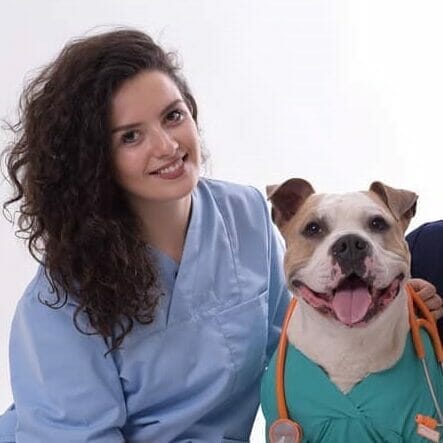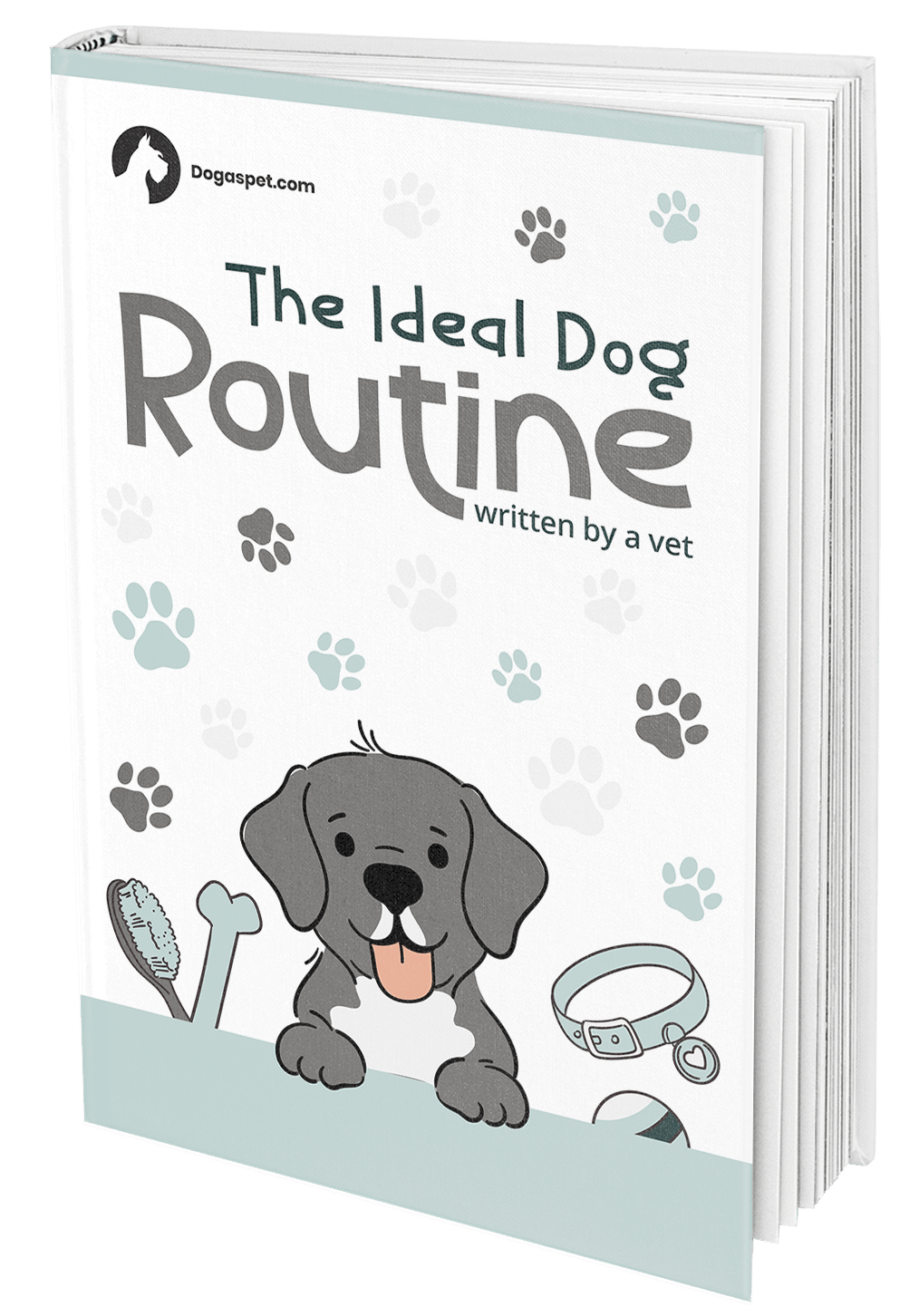
Cataracts in dogs is a condition that clouds the lens of the eye and results in blurred vision or complete, eventual blindness for dogs.
Even though cataracts are easy to detect, there’s still an ongoing debate on what dogs see when the so-called clouding of the eye’s lens becomes more serious.
So, whether your senior dog has recently developed cataracts or you are simply curious for an answer to what dogs with cataracts see, we at Dogaspet have the answer.
What are cataracts in dogs and what do they see?
Before we start talking about what dogs with cataracts see, we need to understand what cataracts are.
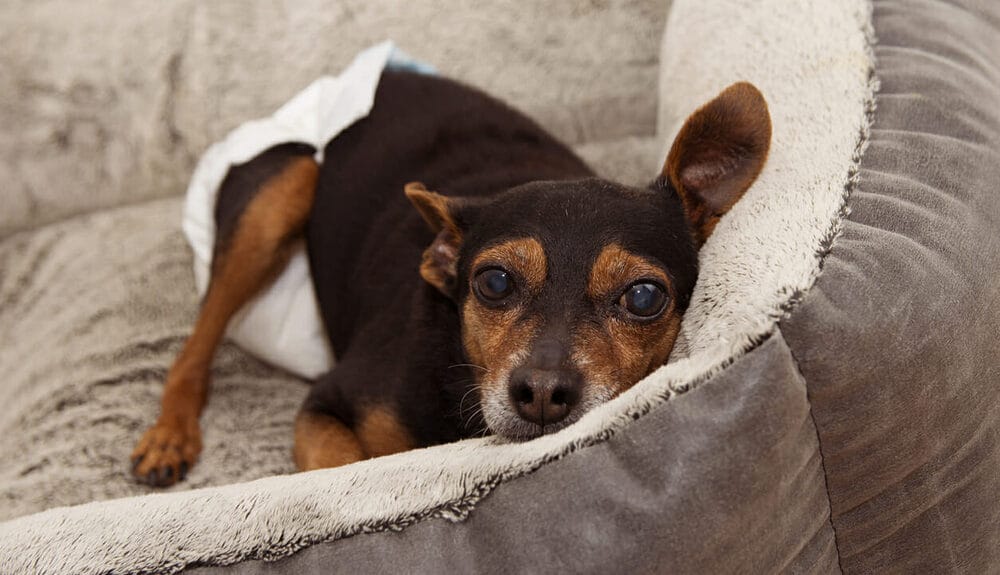
Cataracts are protein formations in front of the lens that leads to a cloudiness of the lens, which can affect the dog’s vision greatly- leading to eventual blindness, or it can be focal.
Focal refers to cataracts that will only affect certain areas of the lens, which may be too small to interfere with the dog’s vision, or it can be a bit more serious, depending on the whiteness of the pupils.
In focal cataracts, there is vision loss in only a few places in the eye, where the light can’t pass through the formed protein layers. This cataract can diffuse over time and cause more significant problems and worse vision loss.
The number or thickness of the protein layers also affects the amount of light that can pass through the lens.
This causes the dog to have a milky-ish vision and only see blurry images. If the condition becomes more serious, it can lead to complete blindness.
Healthy dog lenses are the same as dark, clear, and shiny human lenses. Opposite, a lens with a cataract is covered with a gray and opaque curtain, limiting the amount of light that goes through the lens and onto the retina.
4 Stages of cataracts
Cataracts can be divided into four categories based on the vision loss they cause.
Incipient cataracts
The first and least significant stage is incipient cataracts, in which there is no vision loss because less than 15% of the lens is covered. They’re diagnosed with magnification.
Immature cataracts
Immature cataracts are when 15-99% of the lens is covered, and the covering can be in one or multiple layers in this stage. Depending on that, the vet can still see the retina; if there are fewer layers, there’s no significant vision loss, and it only worsens when the covering is over 75%.
Mature cataracts
Mature cataracts affect the entire lens, and the dog is nearly blind. Dogs with mature cataracts can only see light changes and fix this issue. The difficulty is that vets cannot see the retina, and surgery is the only option.
Hyper-mature
Hyper-mature cataracts are when dogs are near to fully blind. This health issue is fixable only with surgery.
How to Help Dogs See Better With Cataracts?
There are treatment options that every pet owner should be aware of if their dog has developed cataracts or is prone to developing. Here are the most effective ones depending on the severity of your dog’s cataracts:
Surgery

Even though the treatment of cataracts depends on the cataract type and the stage it is in, surgery remains the number one treatment that can cure cataracts and restore the dog’s eye vision. Surgery is the most recommended and, at this point, the only method for fixing cataracts.
After plenty of administered tests and check-ups, your vet will tell you the definite diagnosis, and if your dog is a candidate for surgery, you’re in luck! Luckily, the surgery is almost the same as human surgery, with one exception- the dog needs to be under general anesthesia during the procedure.
The surgery consists of liquefying or emulsifying the lens with an ultrasonic probe. After that, the lens is removed, and fluids are replaced. A corrective or artificial lens is inserted; however, not all surgeons can intact the artificial lens.
When inserted, this lens will be permanently attached to the eye with sutures, restoring the dog’s eye vision to almost normal.
More often than not, the success rate of the operation is above 85%.
Post-op care involves eye-drop treatment, oral medications, and an E-collar to lower the chances of self-inflicted injury. Then follows a lifelong topical medication routine consisting of anti-inflammatory eye drops and regular vet check-ups for weeks or until the dog shows signs of improvement.
Dogs that should not undergo surgery
Terminally ill or very old dogs rarely undergo surgery due to possible complications. In these cases, the risk is huge, and the surgery might do more harm than good.
If the retinas or corneas are not healthy, the dog will stay blind or will become blind even with surgery.
In some cases, the owner is not ready for all the post-operative treatment needed because they can’t bear the thought of their dog being in pain and them being their full-time caregiver.
The dog’s temperament is also important, mainly for post-operative treatment, because some dogs are hard to medicate and manage after surgery.
Dog goggles
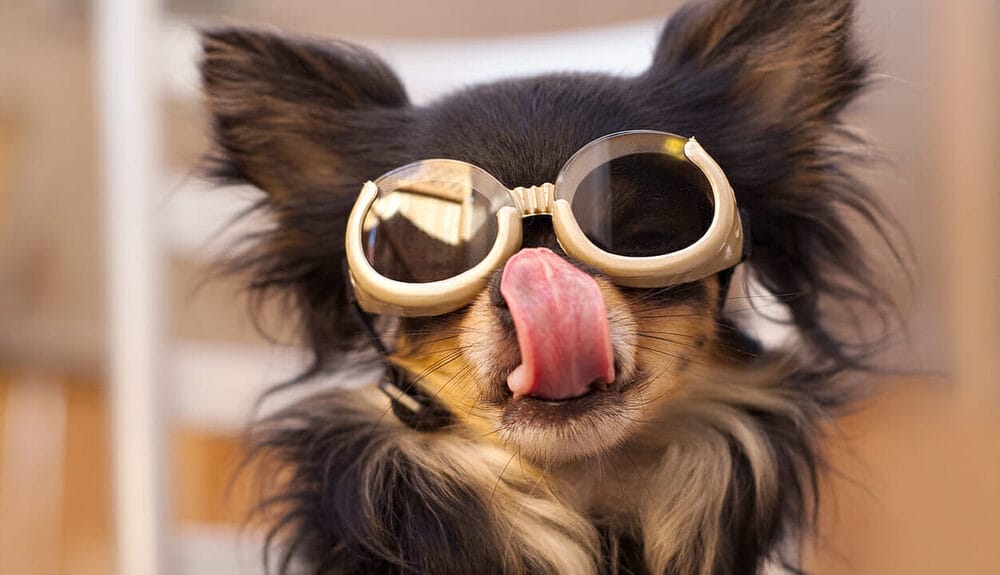
This option is the best for active and adventurous dogs and owners that can’t get enough of the outdoors.
Aside from protecting your dog’s eyes from the physical trauma of the lens, cornea, and eyelids, many goggles have built-in UV protection filters for harsh sunlight.
This is an especially good option for dogs with already developing cataracts because the filter slows the diffusion of the process.
They’re also good for other conditions like conjunctivitis and glaucoma.
Eye drops

Topical eye medication is not yet proven to help with cataracts.
However, it is proven effective in diabetic dogs. Eye drops are not guaranteed to slow down the illness. But eye drops can support overall eye health. Before applying eye drops, make sure that your vet prescribed them because taking the wrong eye drops might cause harm.
Does Your Dog Even Have Cataracts?
Having concerns about your dog’s eyes and seeing changes in the lenses? It’s not the end of the world! As soon as you notice changes, take your dog to the vet to determine the cause.
Many tests are required to get the correct diagnosis. Early detection of the issue means proper treatment and a good prognosis in many cases. Be aware that lacking the proper diagnosis can stop or slow down the healing process. The easiest way to diagnose is with magnifying glasses, but this is only possible if the dog is taken to the vet as soon as eye changes occur.
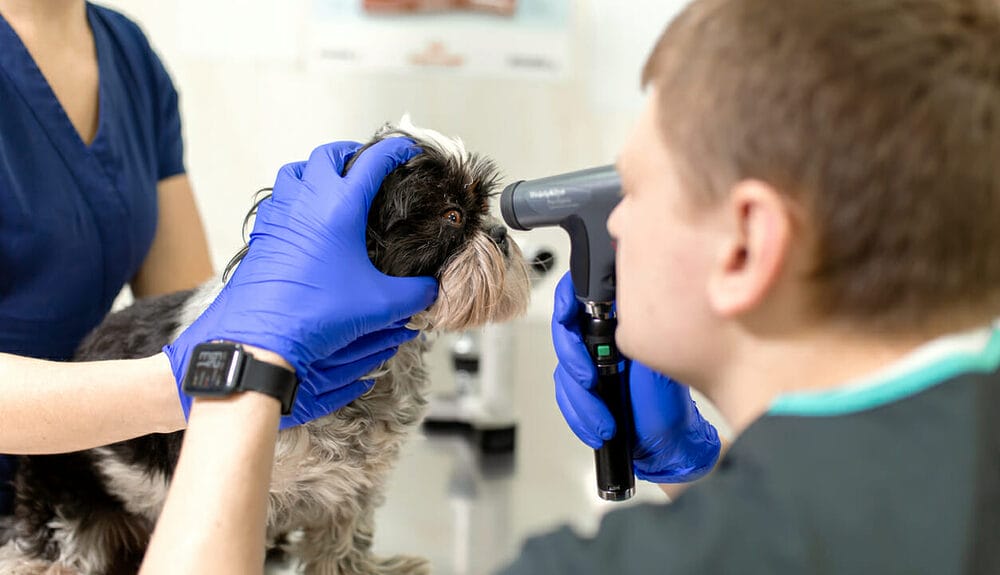
The first test veterinarians do when they suspect a cataract is the slit lamp biomicroscopy, where light is shone into the eye through the lens. The vet can determine any changes or covering of it.
One of the most effective tests is the Schirmer tear test, which distinguishes glaucoma and cataracts. The test is made with a small piece of scaled paper placed in the dog’s lower eyelid. After the paper moisturizes, the vet can make a proper diagnosis.
In the early stages of cataracts, when changes aren’t as prominent, other tests are being used. For example, a fluorescent stain determines defects in the cornea. Everything has a purpose! Your vet will diagnose your pet as soon as possible.
The last test is tonometry. Many veterinarians prefer this test since dogs can tolerate it well, even without sedation. The goal of this test is to measure intraocular pressure. The normal intraocular pressure in dogs is 20-28 mmHg. Everything that’s below or above this range requires medical attention.
FAQ – Frequently Asked Questions
We are coming to the end of this post, but before that – let’s answer some of the most frequently asked questions related to dog cataracts vision.
Can Dogs With Cataracts Feel Pain?
Usually, dogs with cataracts don’t feel any pain. However, some dogs might have unusual behavioral changes.
How Can I Help My Dog With Cataracts?
Following the vet’s advice might be enough to prevent cataracts from developing further. Also, make sure you take your dog for vet check-ups. Having a dog with cataracts might require more frequent vet visits than usual. Your job is to make sure you strictly follow the vet’s orders.
What Does Vision With Cataracts Look Like?
It depends on the cataract stage. Some dogs’ vision is from gray to black, while others can experience total blindness. Also, it can be one-sided or two-sided. But dogs that have vision issues with one eye are likely to develop vision issues in the other eye.
Conclusion – Vision with cataracts
Catching the diagnosis on time will relieve your stress, and by getting the treatment, you will protect the dog’s welfare by avoiding additional complications. Your dog can live a long and healthy life with the proper care and additional treatments like surgery or dog goggles, so your dog no longer sees the world from a gray or black perspective.
